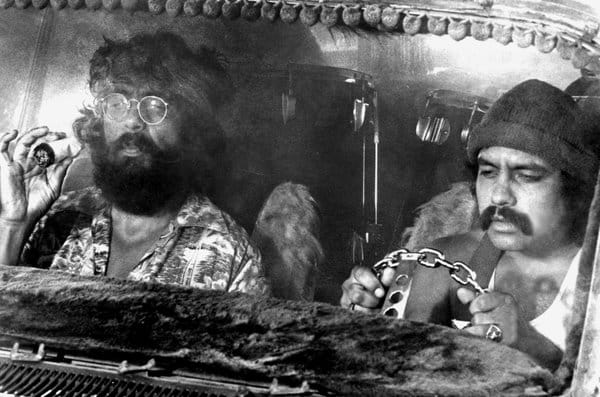
MAGGIE KOERTH-BAKERFEB. 17, 2014
If you are pulled over on suspicion of drunken driving, the police officer is likely to ask you to complete three tasks: Follow a pen with your eyes while the officer moves it back and forth; get out of the car and walk nine steps, heel to toe, turn on one foot and go back; and stand on one leg for 30 seconds.
Score well on all three of these Olympic events, and there’s a very good chance that you are not drunk. This so-called standard field sobriety test has been shown to catch 88 percent of drivers under the influence of alcohol.
But it is nowhere near as good at spotting a stoned driver.
In a 2012 study published in the journal Psychopharmacology, only 30 percent of people under the influence of THC, the active ingredient in marijuana, failed the field test. And its ability to identify a stoned driver seems to depend heavily on whether the driver is accustomed to being stoned.
A 21-year-old on his first bender and a hardened alcoholic will both wobble on one foot. But the same is not necessarily true of a driver who just smoked his first joint and the stoner who is high five days a week. In another study, 50 percent of the less frequent smokers failed the field test.

Launch media viewer Tommy Chong and Cheech Marin in the film “Up in Smoke.” In one study, only 30 percent of drivers who had smoked marijuana failed a sobriety test. Everett Collection As more states legalize medical and recreational marijuana, distinctions like these will grow more and more important.
But science’s answers to crucial questions about driving while stoned — how dangerous it is, how to test for impairment, and how the risks compare to driving drunk — have been slow to reach the general public. “Our goal is to put out the science and have it used for evidence-based drug policy,” said Marilyn A. Huestis, a senior investigator at the National Institute on Drug Abuse. “But I think it’s a mishmash.” A 2007 study found that 12 percent of the drivers randomly stopped on American highways on Friday and Saturday nights had been drinking. (In return for taking part in the study, intoxicated drivers were told they would not be arrested, just taken home.) Six percent of the drivers tested positive for marijuana — a number that is likely to go up with increased availability. Some experts and officials are concerned that the campaign against drunken driving has not gotten through to marijuana smokers.
“We’ve done phone surveys, and we’re hearing that a lot of people think D.U.I. laws don’t apply to marijuana,” said Glenn Davis, highway safety manager at the Department of Transportation in Colorado, where recreational marijuana use became legal on Jan. 1. “And there’s always somebody who says, ‘I drive better while high.’ ” Evidence suggests that is not the case. But it also suggests that we may not have as much to fear from stoned driving as from drunken driving. Some researchers say that limited resources are better applied to continuing to reduce drunken driving.
Stoned driving, they say, is simply less dangerous. Still, it is clear that marijuana use causes deficits that affect driving ability, Dr. Huestis said. She noted that several researchers, working independently of one another, have come up with the same estimate: a twofold increase in the risk of an accident if there is any measurable amount of THC in the bloodstream. The estimate is based on review papers that considered the results of many individual studies.
The results were often contradictory — some of the papers showed no increase in risk, or even a decrease — but the twofold estimate is widely accepted. The estimate is low, however, compared with the dangers of drunken driving. A recent study of federal crash data found that 20-year-old drivers with a blood-alcohol content of 0.08 percent — the legal limit for driving — had an almost 20-fold increase in the risk of a fatal accident compared with sober drivers. For older adults, up to age 34, the increase was ninefold.
The study’s lead author, Eduardo Romano, a senior research scientist at the Pacific Institute for Research and Evaluation, said that once he adjusted for demographics and the presence of alcohol, marijuana did not statistically increase the risk of a crash. “Despite our results, I still think that marijuana contributes to crash risk,” he said, “only that its contribution is not as important as it was expected.”
The difference in risk between marijuana and alcohol can probably be explained by two things, Dr. Huestis and Dr. Romano both say. First, stoned drivers drive differently from drunken ones, and they have different deficits. Drunken drivers tend to drive faster than normal and to overestimate their skills, studies have shown; the opposite is true for stoned drivers.
“The joke with that is Cheech and Chong being arrested for doing 20 on the freeway,” said Mark A. R. Kleiman, a professor of public policy at the U.C.L.A. School of Public Affairs.
Dr. Huestis also found that in laboratory studies, most people who were high could pass simple tests of memory, addition and subtraction, though they had to use more brainpower than sober people who passed the same tests. People who were drunk were much more likely to fail.
The deficits of being stoned really began to show up, she said, when people had to handle multiple tasks at once and were confronted with something unexpected.

